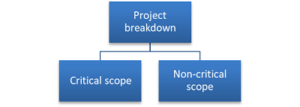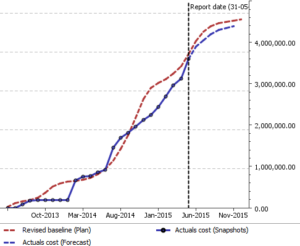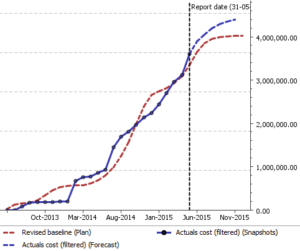
Working in the field of project cost management, you will very likely encounter long lists of commitments, actuals, and other cost control documents that need to be reported on a frequent basis. To ease the job of structuring this cost data, breakdown structures prove to be the answer. They allow otherwise flat data to be viewed under many angles, serving the needs of the various stakeholders in the project, e.g. management, clients, and engineers.
Cost Breakdown Structure and Work Breakdown Structure
You are probably familiar with the Cost Breakdown Structure (CBS) or Work Breakdown Structure (WBS). Nowadays, a WBS is commonly required as a project cost management tool in most contracts, while the CBS often serves for cost accounting and reporting. Breakdown structures can also generate all kinds of metrics and benchmarking and can become an essential business intelligence tool for a project.
Separating budget items in cost control documents
For example, you can structure a cost report by separating the critical and non-critical budget items. This simple distinction makes it possible to focus your attention on the activities that drive the project’s performance, instead of being clouded by the less important data.

The figure below shows the S-curves describing the current approved budget (red), as it is planned to be spent, compared to the actual expenditures (blue). The actuals are extrapolated up to the end of the project, indicating a slight under run of the budget.

This seems like a favourable situation, but mind you, this is the graph of the total project cost. The total actual cost at any time is the sum of possibly many individual costs that run over and under the budgeted values. Some of these actuals have a significantly larger impact on the project outcome than others. Therefore, it is wise to filter out the less critical parts and re-evaluate the case.

Figure 2 filters out the less critical parts and shows only the critical project scope. As you can see, this figure provides a totally different view from the one above, one that even shows a predicted overrun of the budget!
To conclude, breakdown structures help you structure your cost control documents and reveal your project’s real performance. Incorporating the right tools, such as Cleopatra’s project controls software, can further streamline these processes and provide actionable insights to keep your projects on track.
Effective project management requires a careful balance of three critical factors: cost, schedule, and scope. These interdependent elements,…
In project management, a Cost Breakdown Structure (CBS) is a vital view used to organize and track expenses…
Related resources
What Is a Work Breakdown Structure (WBS) and Why Is It Important?
A well-defined Work Breakdown Structure (WBS) forms the cornerstone of every high-performing cost control department. It gives a clear structure that links project scope, cost, and time. This ensures that every deliverable is well-defined and easy to track during the project. In this article, we’ll explore what a WBS is,…
A well-defined Work Breakdown Structure (WBS) forms the cornerstone of every high-performing cost control department. It gives a…
Read blog articleDefining and Creating Resource Breakdown Structures (RBS)
In this blog, we look at Resource Breakdown Structures, how to create them, their benefits, and practical tips for implementation.
In this blog, we look at Resource Breakdown Structures, how to create them, their benefits, and practical tips…
Read blog article